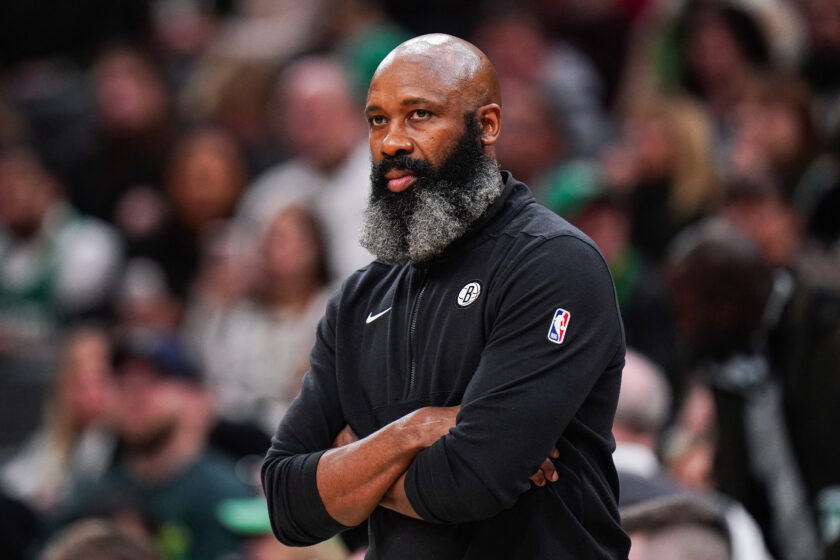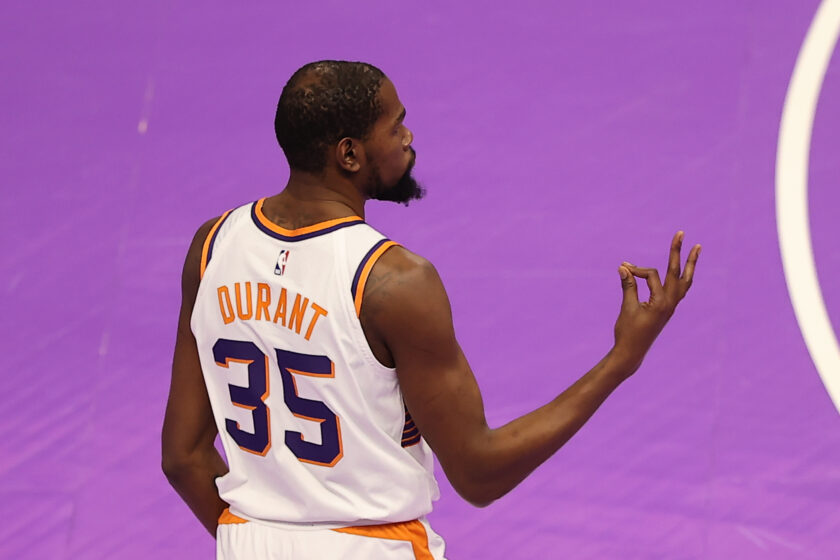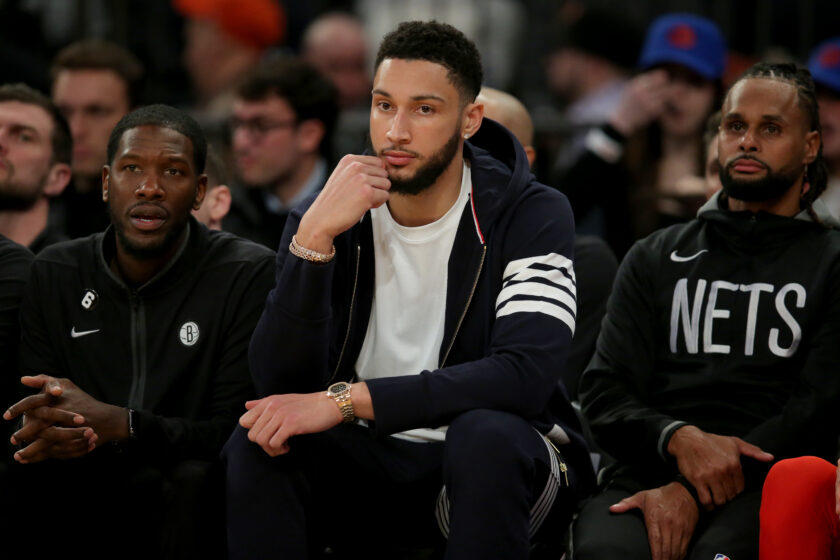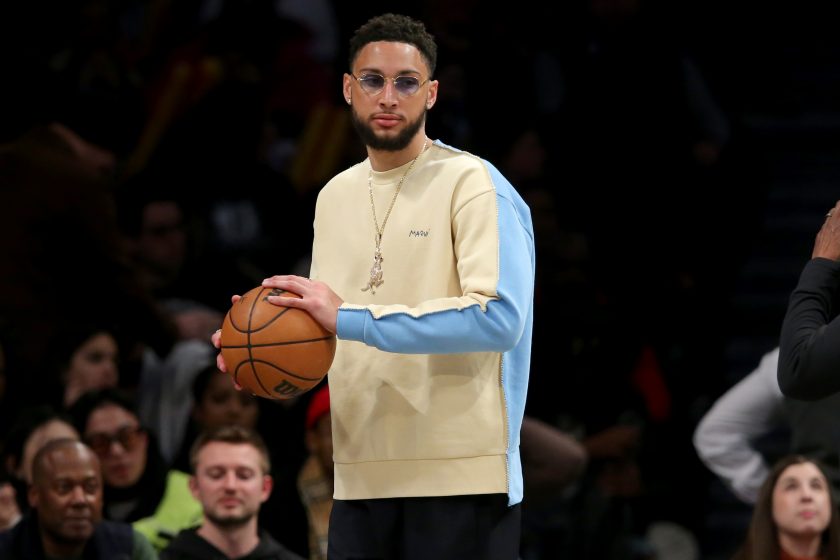Brooklyn Nets strategy: An explanation for Spencer Dinwiddie’s slump
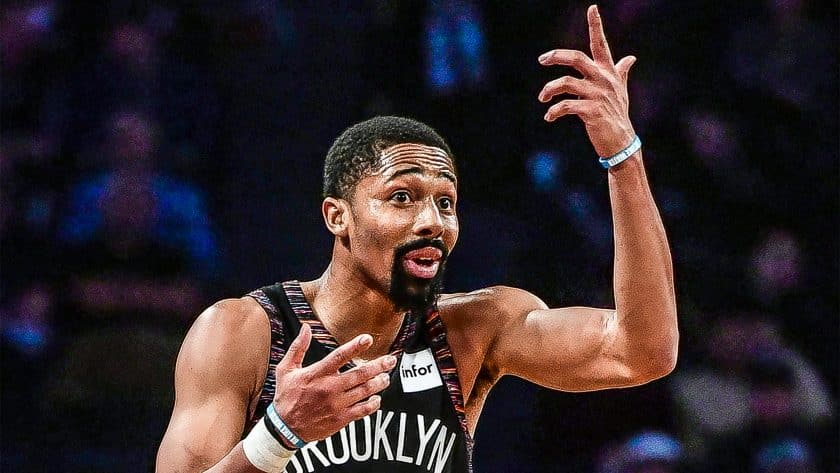
After a tremendous December, Brooklyn Nets guard Spencer Dinwiddie is in a bit of a shooting slump. The question is, why?
[sc name=”Matt Brooks Banner” ]In December, the Brooklyn Nets cemented themselves as one of the league’s most competitive teams. Brooklyn won 10 of 11 games. As someone who covered each game, it was fantastic.
Brooklyn’s engine to this precipitous run was its 6-foot-6 point guard, Spencer Dinwiddie. During this extended streak, which ran from Dec. 7 to the 26th, Dinwiddie was the irrefutable best player on Brooklyn’s roster.
His production was unmatched. Dinwiddie averaged 24.4 points on 48.7 percent shooting and an uncharacteristic 40.3 percent from three. (Not to mention, he averaged 6.6 assists as well).
Dinwiddie’s play was so strong that it earned him a little Christmas bonus. Well, maybe little is the wrong word. In the midst of this hot streak, Spin-widdie and the Nets agreed to an extension worth $34 million over the next three years.
However, since the turn of the new year, Dinwiddie has been slumping. In his last seven games, the 25-year-old point guard has only averaged 11.7 points. This comes with an unordinary 36.9 percent from the field and a blatantly awful 26.9 percent from three.
Some of his low-lights include an unsightly 1-of-9 shooting performance against the Charlotte Hornets, as well as an Andrew Wiggins-esque 5-for-14 showing against the Atlanta Hawks. (His game against the Hawks and their bottom-seven defense was especially painful. Dinwiddie should have torched this foul-happy Atlanta team that ranks second in fouls per game).
Now, as many of you know, I am the unequivocal Dinwiddie-whisperer here at ESNY. I breathe all things related to Spencer Dinwiddie.
That’s why it is so tough for me to admit: Dinwiddie’s numbers have slowly tailed off since signing his extension.
Which brings up the question, did the money get to Dinwiddie’s head? Was he playing within the confines of a contract year? Did he just want to get his money now? Suddenly, those “I’m home” comments don’t hold as much value.
[sc name=”Nets Center”]Now, before we get into the reasoning behind Dinwiddie’s slump, let’s take a look at his recent play.
Dinwiddie is great from many areas of the court. He’s world-class at driving to the cup, is excellent at getting to the line, assists the ball better than most back-ups, and is a shifty ballhandler.
However, Dinwiddie has always had one flaw in his game: three-point shooting.
That isn’t to say that Dinwiddie is a bad shooter.
Dinwiddie’s biggest issue as a long-range shooter pertains to his shot selection.
Dinwiddie has a forbidden love for shooting 30-foot bombs from near mid-court with plenty of time remaining on the shot-clock. By now, I’ve reported on this extensively. If your name doesn’t start with “Stephen” and end with “Curry,” these type of shots are unacceptable.

Now, while Dinwiddie has fallen victim to these type of shots on a few occasions, his shot selection has not been the source of his recent problems.
Interestingly, his three-point volume has actually declined slightly. Prior to his slump, 44.1 percent of his shots came from behind the arch. During the slump, only 40 percent of Dinwiddie’s attempts have been threes. Since shooting the long-ball isn’t exactly Dinwiddie’s best form of offense, his decision to reel back the three-ball should be looked at as a modest victory.
Without the careless threes, all signs should point to Dinwiddie playing the best ball of his season. Unfortunately, this is not the case.
At his best, Dinwiddie is a mismatch nightmare, capable of bursting down the lane for acrobatic finishes at the rim. Until recently, Dinwiddie was one of the best at-rim finishers in the league, putting up big-man numbers in the restricted area. He was also a league-leader in points off of drives.
[sc name=”Nets Link Related” link=”https://elitesportsny.com/2018/12/16/the-spencer-dinwiddie-deal-is-an-absolute-steal-for-the-brooklyn-nets-film-room/” text=”Spencer Dinwiddie Is A World-Class Finisher” ]Shockingly, this is where we find Dinwiddie’s decline. What was once his biggest strength has now become a major weakness.
Through Dec. 28, Dinwiddie was a wizard in the restricted area. Of his 139 attempts within the circle, Dinwiddie scored on 96 of them. Folks, that’s 69.1 percent. That’s insane.
During these last seven games, Dinwiddie has scored on only 54.2 percent of his restricted area attempts. In the span of two short weeks, Dinwiddie went from putting up DeMar DeRozan numbers to Reggie Jackson numbers at the rim.
Dinwiddie has replaced those once-smooth drives to the rim with wild, flailing attempts. More often than not, it appears that Dinwiddie is hunting for foul calls rather than looking to make a basket.

Off balance misses like this don’t do much good for Brooklyn’s motion-heavy offense. They increase the likelihood of transition baskets for the opposing team. That’s a huge issue. Brooklyn has a bottom-five mark in opponents’ points off of turnovers.
Dinwiddie is a rhythm player. He needs to see the ball fall through the twine a couple of times to get himself going.
Usually, his tenacious drives fuel his scoring runs. However, when he’s taking abrasive shots (like the one found in the video below), his flow is impinged on from the get-go.

The very next possession after this missed layup, Dinwiddie was handed a gift; a wide-open spot-up three.
Dinwiddie’s shot barely hit front-rim.

(By the way, off-topic, but can we appreciate the brilliance of Russell’s cross-court pass? What a beauty!)
For better or for worse, Dinwiddie’s extension has brought him to the center-stage of the NBA landscape. Once an overlooked G-Leaguer, Dinwiddie is soon to be the third-most expensive player on Brooklyn’s roster (assuming that Russell resigns).
A few possible explanations could be used to make sense of Dinwiddie’s slump. Perhaps his vaunted status has prompted defenses to better prepare for his downhill game. Or, perhaps Dinwiddie’s pay raise has him feeling like a star, and he’s looking for the foul calls to match.
This is where I, head of the Spencer Dinwiddie fan-club, will come to his defense and offer a different interpretation.
The Nets have been struggling with injuries lately. Rondae Hollis-Jefferson, who exited the game against the Milwaukee Bucks with a groin strain, has not suited up in two weeks.
Hollis-Jefferson’s efforts are mostly felt on the defensive end of the floor. On offense, however, he does a couple of things well.
With LeVert recovering, Hollis-Jefferson is the team’s best transition player. He, much like LeVert, is a downhill threat while playing in the half-court.
With Hollis-Jefferson out, Dinwiddie is the only player who can effectively get his own shot while driving to the rim. This, sadly, makes Brooklyn’s world-class offense easier to defend. It also puts more pressure on Dinwiddie to create.
With Hollis-Jefferson sidelined, a few players have entered the rotation as replacements.
[sc name=”NBA Center” ]Shabazz Napier, an undersized point guard out of Connecticut, has seen the biggest minutes increase.
In his last seven games, Napier has seen his minutes average rise from around 14 to 24.9 minutes per game.
Most of Napier’s minutes have come from the reserve role, meaning that he has shared the floor with Spencer Dinwiddie quite a bit. Of the 131 total minutes that Dinwiddie has played, 69 of them have come alongside Shabazz Napier. That is a lot of shared time for two heat-check, score-first point guards whose skills overlap.
Napier produced almost immediately upon landing the minutes promotion. In his first game, he dropped 32 points on 9-of-15 shooting against Milwaukee’s third-ranked defense.
Since tying his career-high in scoring, Napier has crashed down to earth. Over the last five games, Napier has mustered 12.2 points on 37.7 percent from the field and 29.9 percent from three. Of his 53 attempted shots, 24 of them have come from above-the-break. Above-the-break threes are, statistically speaking, some of the toughest shots on the court. Napier has made only 29.2 percent of them.
What’s even more troubling is just how much Napier has been shooting.
Over the five-game span, Napier has attempted 10.6 shots and is making less than 40 percent of them. In contrast, Dinwiddie is taking only 10.2 attempts per game.
Yes, you are reading that correctly. Shabazz Napier, the 6-foot-1, 27-year-old journeyman, is taking more attempts per game than Spencer Dinwiddie. Dinwiddie, the first player on Brooklyn’s roster to receive a long-term deal, has seen his shot attempts drop off from 13.6 per game to 10.2.
For Dinwiddie, a player requires some volume to get going, this is counteractive to his style of play. It’s silly that he’s having the ball taken out of his hands by a guy who probably won’t be there next season.
There’s no doubt that Dinwiddie will get himself back on track. In the aforementioned game against the Hawks, in which Dinwiddie struggled from the field, he still found a way to maneuver his way into these gorgeous back-to-back buckets.

This looks like the Dinwiddie of old.
All he has known is defying the odds. Dinwiddie was a three-star recruit in high school, ranked 128th in his class (according to 247 Sports). Yet he landed five offers to major schools. His basketball career was almost ended by a college ACL tear, but he found a way to recover and earn his NBA draft selection as a second-rounder. Even in the NBA, he was forced to play in the G League for two different franchises before landing a full-time job in Brooklyn.
In contrast with what he has previously overcome, his current struggles are nothing. Dinwiddie will break out of this slump and start finishing amongst the trees like he used to. Things will get easier when Hollis-Jefferson (and hopefully LeVert!) return.
Until then, it’s on Kenny Atkinson to get his star reserve on track. Napier’s against all odds story is inspiring, no doubt. But it’s time to put the ball back in Dinwiddie’s trusty hands.
[sc name=”Nets Link Next” link=”https://elitesportsny.com/2019/01/10/brooklyn-nets-were-finally-seeing-who-dangelo-russell-can-become/” text=”We’re Finally Seeing Who D’Angelo Russell Can Become” ]An NBA fanatic who specializes in the advanced analytics of the game. I cover the Brooklyn Nets here in the city. Follow me on Twitter for semi-witty basketball tweets. @MattBrooksNBA

